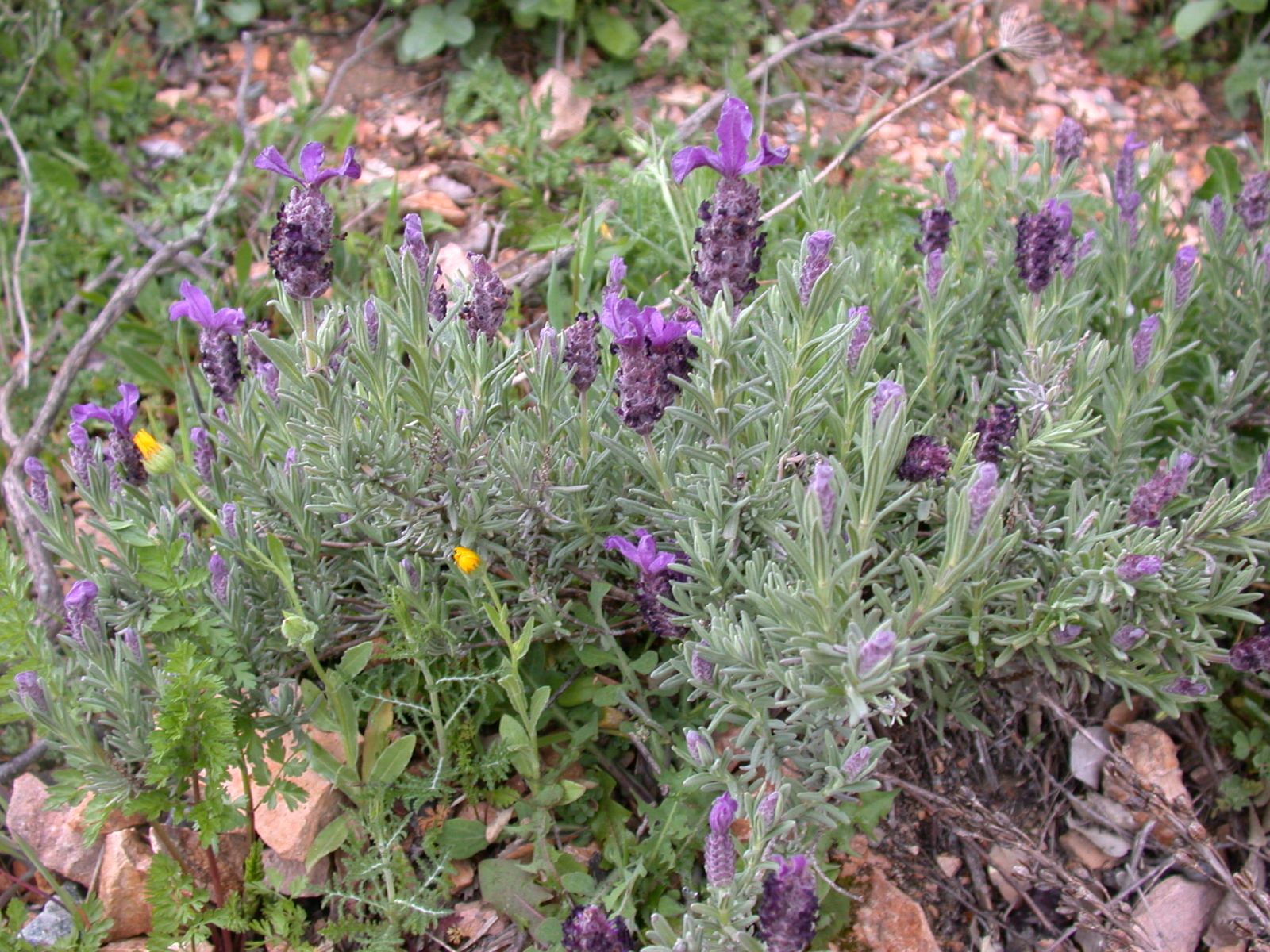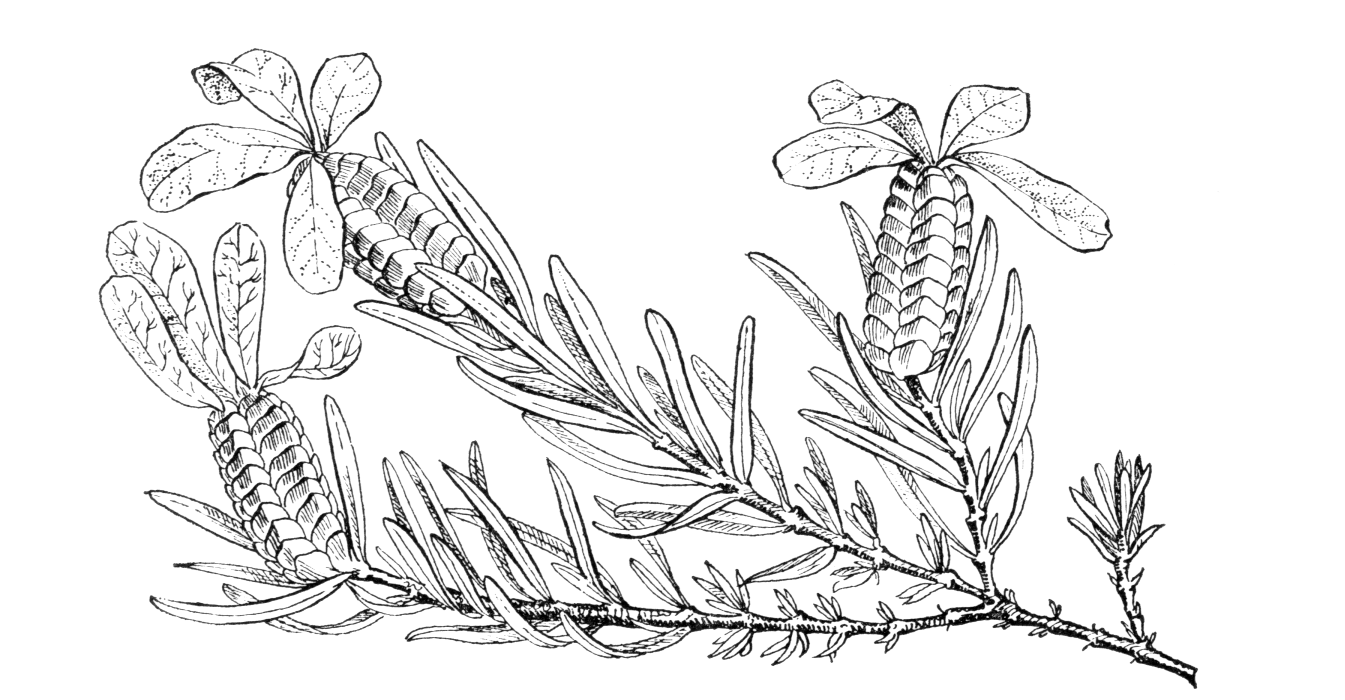Lavandula stoechas
Credits
Article from Bean's Trees and Shrubs Hardy in the British Isles
Recommended citation
'Lavandula stoechas' from the website Trees and Shrubs Online (treesandshrubsonline.
Genus
Common Names
- French Lavender
Infraspecifics
An evergreen shrub 2 to 3 ft high, all of whose vegetative parts are covered with a fine grey down. Leaves stalkless, not toothed, linear, 1⁄3 to 11⁄4 in. long, 1⁄16 to 1⁄8 in. wide, the margins recurved. Main flower-stem from 1⁄2 to 11⁄2 in. long, carrying at the top a spike of closely set blossom 1 to 2 in. long, 1⁄2 in. wide. The variously shaped bracts constitute the most conspicuous and beautiful part of the inflorescence, being purple, ovate or rhomboidal, 1⁄4 to 3⁄4 in. wide, downy, strongly veined. Flowers deeply purple, the small exposed part of the corolla 1⁄8 in. wide. The inflorescence has at the top a few enlarged leaflike purple bracts of obovate outline and 1⁄2 to 1 in. long.
Native of S.W. Europe, extending eastwards along the Mediterranean region to Greece; also of N. Africa. It flowers in its native haunts from April onwards, but commences later with us. It was in cultivation in the middle 16th century and is mentioned by Turner and Gerard in their Herbals as ‘French lavende’. Its hardiness is about the same as that of L. dentata (q.v.). It is easily distinguished by its very short main flower-stalk and stout spike of flowers crowned with a tuft of large foliaceous bracts (but see also L. pedunculata). The shoots and leaves have a curious somewhat pine-like odour when crushed. It succeeds well on the chalk at Highdown, near Worthing.
From the Supplement (Vol. V)
subsp. pedunculata (Mill.) Rozeira Stoechas pedunculata Mill.; L. pedunculata Cav. – See L. pedunculata, page 535. It should however be noted that Flora Europaea recognises three other subspecies in the Iberian Peninsula, all, like subsp. pedunculata, endemic to that area. Also that plants from North Africa, Anatolia, etc, are now also placed under L. stoechas as subspecies. See further in Flora Europaea, Vol. 3, p. 187.
var. leucantha Gingins de Lassaraz
Synonyms
L. s. var. albiflora Bean


